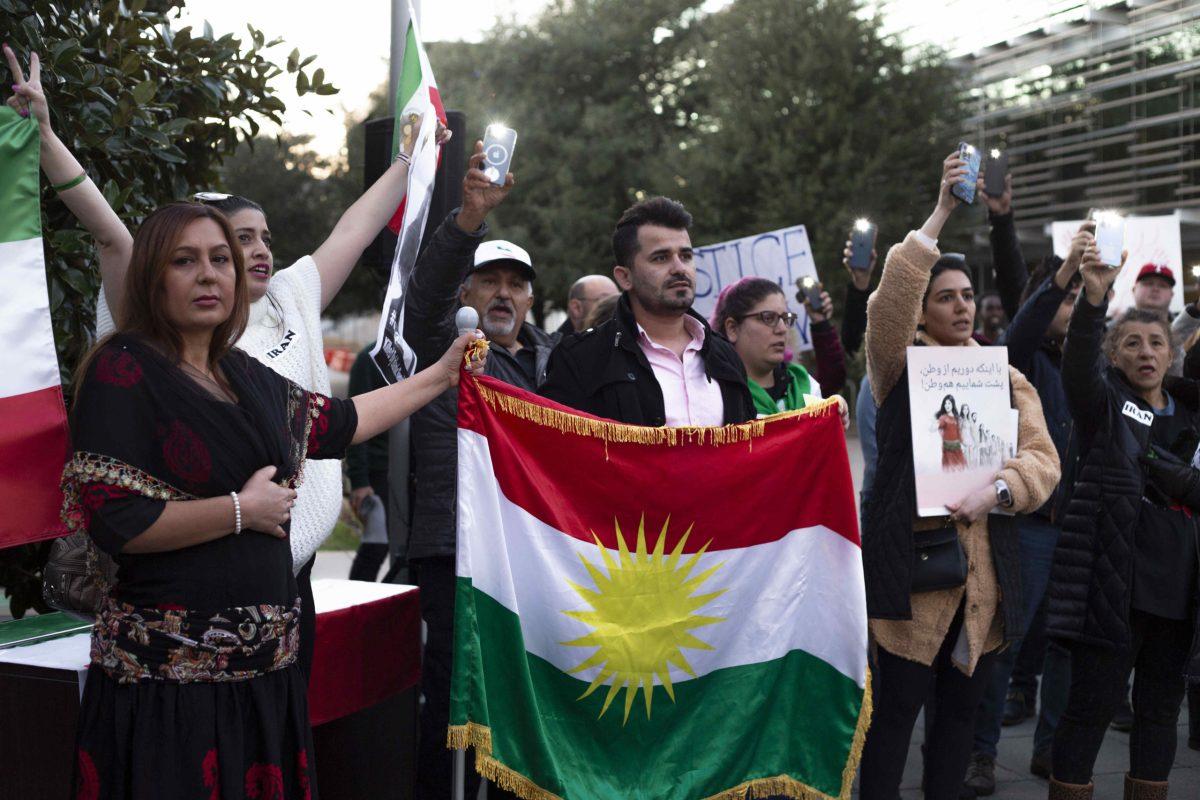Iranian students organized a global demonstration against the revolution in their home country in solidarity with 200 other universities.
Following the demonstration at UTD in September, this event was coordinated between Iranian scholar groups based in North American, European and Oceanic universities. Electrical engineering doctoral student Hazhir Mahmoodi said that they wanted to put together a demonstration that was more than just noise.
“We wanted to come up with something which is more aligned with the background of the people who are attending,” Mahmoodi said. “Performance art and something which is pretty much not very loud, but very effective is what we were thinking about. That was our main goal because based on our feedback from other universities, we realized if we’re just being loud, probably people don’t really connect … we wanted to keep it lower but be more effective. Performance art is one of the best ways to do that.”
In Iran, over 300 people have died in the ongoing protests, including at least 40 children. At UTD, protestors wore the faces of the deceased as a picture on their back or face and held up signs with their names, including Mehran Samak, who was shot for celebrating Iran’s loss to the U.S. in the World Cup. Mahmoodi said that he wants to ensure that these deaths matter to people in the world.
“We don’t want these numbers to just be numbers,” Mahmoodi said. “We want to make sure that the world is caring about what’s happening in Iran … we want to make it very important that if one person, just one person is being executed or being killed, we have to make sure that we are their voice.”
The event is an extension of the protests that Iranian students like visual and performing arts doctoral student Shahrzad Hamzeh have been leading their whole life. Strict Iranian laws control the amount that women can speak to men and forbid singing and dancing. As a result, Hamzeh said that for her, dance was a powerful tool for protest.
“I feel like I’m using my art,” Hamzeh said. “First of all, I had to learn most of the dances that I know underground in Iran. So, to bring that out of that scary place and use it somewhere to fight the regime that’s in Iran, it gives me this sense of power.”
Hamzeh and her fellow performers’ dance was one of multiple performances at the event. There were also two other dances, the singing of the protest song “Soroode Sogand” and speeches from former student prisoner Mitra Razavi and assistant AHT dean Pia Jakobsson. Hamzeh hoped to embody through her dance her experience in Iran. “I’m trying to physically give form to the oppression I went through,” Hamzeh said.
“When we’re jumping up and down, it’s like I’m in a situation where I’m nervous, or I’m ashamed or that I don’t know if I’m doing it right. Because as a woman, you’re constantly hearing that you’re doing it wrong because you shouldn’t be laughing too loud, you shouldn’t be talking to males. You shouldn’t dance, you shouldn’t sing, all these things. So you’re constantly questioning yourself.”
Mahmoodi said that the group — Iranian Scholars for Liberty — plans other events to bring awareness to the human rights violations in Iran. Their full statement can be found on their website, www.iranianscholarsforliberty.com. Mahmoodi said that he hopes the event inspires people to fight against human rights oppressors wherever they are.
“I think if we don’t defend these human rights in Iran,” Mahmoodi said, “who knows, tomorrow we have to fight for basic human rights all over the world … maybe tomorrow we have to fight for basic human rights even in other developed countries. So I wanna make sure that we’re cutting that lack of human rights right at the beginning.”





